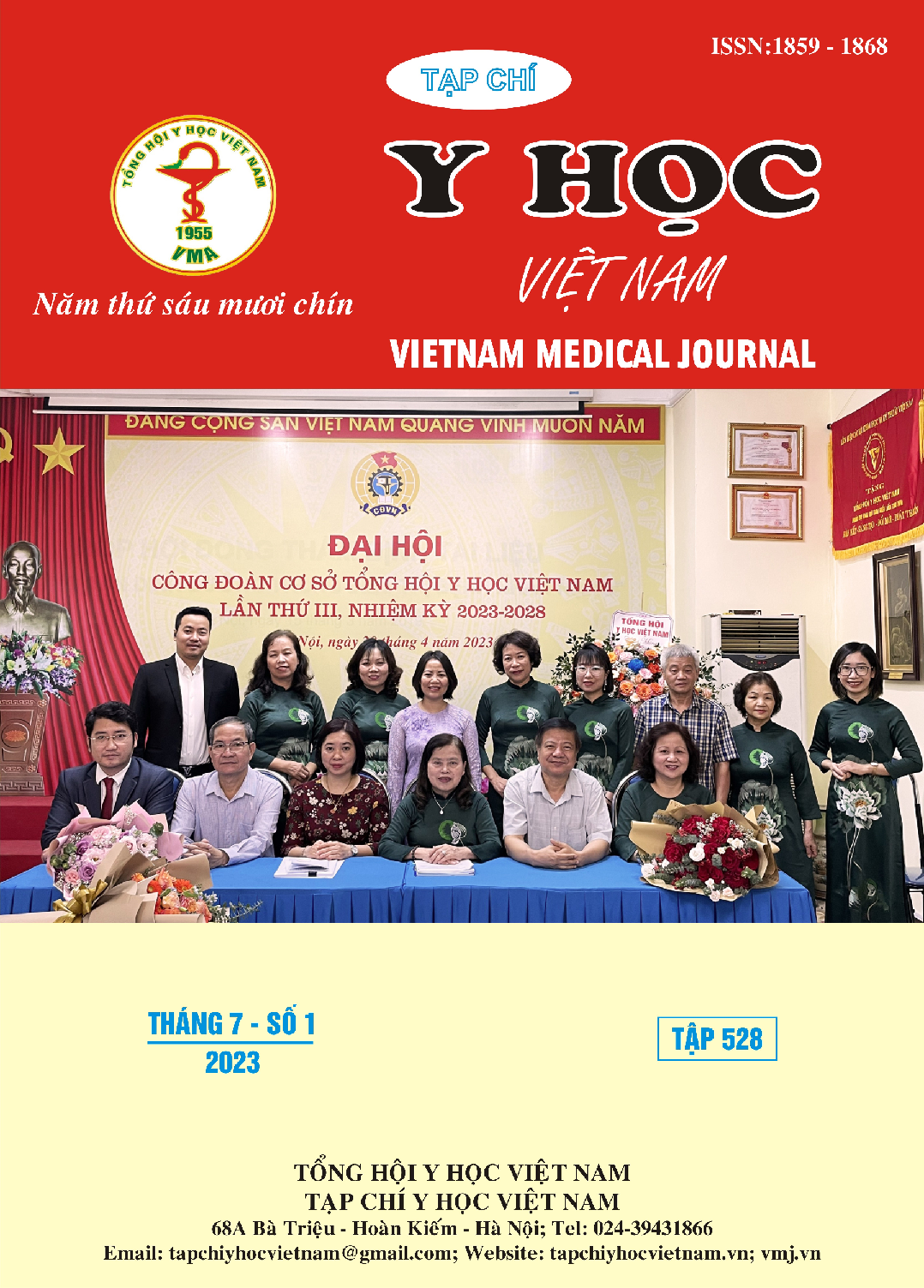THE ANTIBIOTIC RESISTANCE AND RESISTANCE GENES OF STREPTOCCOCUS SUIS IN HUMAN
Main Article Content
Abstract
Background: Streptococcus suis (S. suis) is a human pathogen that causes a number of diseases and has the ability to spread epidemics with significant fatality rates, particularly in septic shock patients. Objectives: To analyze antibiotic resistance and the expression of drug resistance genes of S. suis in human. Methods: A prospective, observational study to analysis of the antibiotic resistance of S. suis by E-test technique and resistance genes of S. suis. Results: 90% of patients were male. S. suis strains were completely susceptible to penicillins, ampicillin, ceftriaxone, linezolid, and vancomycin. Antibiotics with a high rate of resistance were erythromycin (76.3%), clindamycin (73.5%), and tetracycline (97.6%). Antibiotic resistance genes included: ant(6), tet(B), tet(O), and erm(B) with prevalence of 78.75%, 75%, 28.75%, and 60%, respectively. Conclusion: S. suis has remained resistant to commonly used antibiotics such as penicillin, ampicillin, and ceftriaxone. There was an association of the frequency of resistance genes and antibiotic resistance on the antibiogram.
Article Details
Keywords
Streptococcus suis, S. suis resistance gene
References
2. Hongjie Yu, Huaiqi Jing, Zhihai Chen, et al., (2006). Human Streptococcus suis Outbreak, Sichuan, China. Emerging Infectious Diseases • http://www.cdc.gov/eid, 2(6), 914 - 920.
3. Fongcom, A., S. Pruksakorn, P. Netsirisawan, et al., (2009). Streptococcus suis infection: a prospective study in northern Thailand. Southeast Asian J Trop Med Public Health, 40(3), 511-7.
4. Cục Y tế dự phòng, B.Y.t., (2017). Niêm giám thống kê Bệnh truyền nhiễm năm 2016. Trang 05.
5. Sang-Ik OH, Albert Byungyun JEON, Byeong-Yeal JUNG, et al., (2016). Capsular serotypes, virulence-associated genes and antimicrobial susceptibility of Streptococcus suis isolates from pigs in Korea. The Journal of Veterinary Medical Science, 79(4), 780-787.
6. Jose Antonio Escudero, Alvaro San Millan, Ana Catalan, et al., (2007). First Characterization of Fluoroquinolone Resistance in Streptococcus suis. Antimicrobial Agents and Chemotherapy, 51(2), 777-782.
7. Ngo T Hoa, Tran TB Chieu, Ho DT Nghia, et al., (2011). The antimicrobial resistance patterns and associated determinants in Streptococcus suis isolated from humans in southern Vietnam, 1997-2008. BMC Infectious Diseases 2011, 11:6, 11(6), 1-8.
8. Soares, T.C., A.C. Paes, J. Megid, et al., (2014). Antimicrobial susceptibility of Streptococcus suis isolated from clinically healthy swine in Brazil. Can J Vet Res, 78(2), 145-9.
9. Yongkiettrakul, S., K. Maneerat, B. Arechanajan, et al., (2019). Antimicrobial susceptibility of Streptococcus suis isolated from diseased pigs, asymptomatic pigs, and human patients in Thailand. BMC Vet Res, 15(1), 5.
10. Athey, T.B., S. Teatero, D. Takamatsu, et al., (2016). Population Structure and Antimicrobial Resistance Profiles of Streptococcus suis Serotype 2 Sequence Type 25 Strains. PLoS One, 11(3), e0150908.


